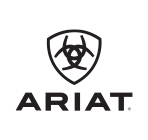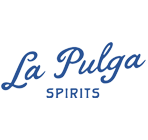Visitors to Fort Worth’s new music, sports and entertainment venue, Dickies Arena, will be greeted by a magnificent tribute to the region’s rich western heritage and diversity, depicted in a number of works of public art, most notably two expansive mosaic murals crowning the building’s north and south gateways.
The murals enhance the architecture of the David M. Schwarz-designed building, itself inspired by the Art Deco style found throughout the adjacent Will Rogers Memorial Center, and add to the significant and proud tradition of public art which has enriched the city’s cultural palette for generations.
South Façade Mural and Bas-Relief Sculptures
Rising above the south entrance is a large-scale mural created by William Matthews, one of the country’s best-known contemporary Western artists, which highlights a lively scene celebrating the American West. Working primarily in watercolor, Matthews artwork is prominently displayed in private and public collections, including the Denver Art Museum and National Cowboy & Western Heritage Museum in Oklahoma City.
When Matthews was asked to create a mural for Fort Worth’s new arena, he met with a trusted group of friends and advisors – including Texas-based sculptor and Cherokee Nation member Buckeye Blake, Lubbock writer and poet Andy Wilkinson, and John Grant of Public Art Services, known for its work in creating and managing installations of creative public artworks . Together the group mused over the history and culture of Texas, Fort Worth, and of the West, ultimately agreeing to commemorate the horse as a focal symbol
Matthews titled his entrance piece “Los Caballos” to celebrate the horse, whose introduction to North America by the Spanish transformed the Great Plains for both Native Americans and American pioneers. Set against an untamed landscape, the piece captures the movement and colors of wild horses running among the golds and browns of patchy scrub and brush, with a backdrop of purple rolling hills, mesas and a storm-filled sky. Measuring 12 feet tall and 63 feet wide, the piece was translated from Matthews’ original watercolor in partnership with Public Art Services, which managed the design, execution, and installation of the mural.
The mural came to life at the renowned and storied fabrication studio Mosaicos Venecianos in Cuernavaca, Mexico, where skilled artisans working from a life-size reproduction of the “Los Caballos” work pieced together color-matched, hand-cut tiles to capture the vibrancy and dynamic of its scene. Founded in the 1950s, Mosaicos Venecianos became Mexico’s first Venetian-style mosaic studio and was launched at the birth of the Mexican muralist movement when Italian masters worked alongside such artistic luminaries as Diego Rivera, David Alfaro Siqueiros, Francisco Eppens, José Clemente Orozco, and José Chavez Morado. Today the mosaic studio is owned and operated by three daughters of the founder, Don Elpidio Perdomo, and is one of the largest mosaic producers in Mexico and the only remaining Venetian mosaic art studio in the country. Public Art Services’ blog and photography capture the evolution of “Los Caballos” at the Cuernavaca fabrication studio.
Matthews said, “I was deeply honored to be asked to participate in Fort Worth’s new Arena project. I’ve been painting images of the West for 40 years, and feel like I’m a specialist in ideas and images of Western art. We felt that it was important to use the horse as the great symbol of the spread of peoples throughout the American West, for activity and for equalizing all cultures. That’s why the main mural depicts wild horses coming through the sage. The horse was the greatest technology the West had seen, and still is to this day.”
The celebration of the horse in Western history and culture is also central to otwo bronze bas-relief sculpture, flanking the “Los Caballos” mural, and serving as welcome ambassadors. Each were sculpted by Buckeye Blake, from original drawings made by Matthews. On the left is a 19th century cowboy, skilled and confident, riding in a period saddle, and dressed in cuffs, old-style Stetson and chaps, tipping his hat with respect. On the right is a sculpture of a Comanche, considered the “Lord of the Plains,” finest mounted warriors, and epitome of Plains Indian horse culture. The Comanche, brave and graceful, is dressed in traditional garb of breech cloth and bone breast plate, carrying a bow and arrow, and 14-foot bronze lance.
In sizing up Matthews’ mural, perhaps Cowboy poet Andy Wilkinson said it best, “Los Caballos is self-evident to the casual and first-time viewer but with the complexity to reward repeated study—an instant appreciation of the vastness of the Western landscape, of the strength and prowess of the Comanche, of the skill of the cowboy, of the moving freedom granted by the horse, but carrying within that instant appreciation the deep history of all those elements.”
North Façade Mural
The awe-inspiring three-panel mural gracing the north entrance of Fort Worth’s Dickies Arena was created by Brooklyn-based EverGreene Architectural Arts, the nation’s largest specialty contractor of architectural arts. Led by Jeff Greene, EverGreene is highly praised for its installation of the murals by artists Scott and Stuart Gentling in Fort Worth’s Bass Performance Hall, as well as for its artistry in some of the country’s most prominent buildings such as the United States Capitol, Library of Congress, the Empire State Building, the Chrysler Building and Rockefeller Center.
EverGreen‘s mural for the new arena was styled to mirror themes of the 1936 mosaic artwork on the entablatures of the façades of the historic Will Rogers Memorial Coliseum and Auditorium, located not far away. The mural spans 108 feet in length and ten feet in height and is composed of more than 600,000 colored glass titles pieced together to portray the diverse history symbolized by icons of Texas culture.
Moving left to right, the mural tells the story of the settlement of Texas by pioneers traveling by covered wagon led by yoked oxen. Diverse figures present an inclusive and true reflection of Texas culture and history, including a cowgirl, an African-American cowboy, a Vaquero, and a cowboy bearing a Lone Star flag, all mounted on horseback:
- Cowgirl: With a nod to the nearby National Cowgirl Museum & Hall of Fame— whose mission states “she honors and celebrates women, past and present, whose lives exemplify the courage, resilience and independence that helped shape the American West, and fosters an appreciation of the ideals and spirit of self-reliance they inspire”— the cowgirl represents an independent, fearless and resourceful figure critical to the settlement of Texas all the way to present day.
- Black Cowboy: After the Civil War, African-Americans played an increasingly important role as drovers on cattle drives to Kansas railheads during the great trail drive era 1866-1880. Scholars estimate at least 25% of cowhands employed on trail drives were African-American. Trusted because of their work ethic and dependability, trail bosses often empowered them with important responsibilities beyond those of a typical drover. Upon the end of the trail drive era, many of these cowboys settled on ranches and farms they acquired with earnings saved from their years spent on the trail.
- Vaquero: In Texas and throughout the West, the tradition of the vaquero in Hispanic culture helped shape cowboy life and lore as we know it today. Adoption of vaquero practices was so widespread that many of their words— or adaptations of them—are well-known in Texas culture today – bronco, lasso, chaps, lariat, and rodeo, among others. Today, Fort Worth celebrates its own ties to the vaquero tradition in its public arts collection with the 2012 bronze statue Vaquero de Fort Worth by artists David Newton and Tomas Bustos, overlooking an area that developed due to the success of the cattle business. Further information about the importance and vitality of vaqueros is available via the The Sid Richardson Museum blog post “Viva El Vaquero!”.
- Texas Cowboy. Holding the Texas flag, the legend of the 19th century Texas cowboy spread as drovers headed cattle north along the Chisholm Trail to this cowboy depot and cattle-trading hub, stopping for supplies in Fort Worth. Playing a key role in Texas history, this diverse group of cowboys embodied the Old West and opened the land to ranching driven by a growing demand for beef. Between 1866-1890, drovers trailed more than four million head of cattle through Fort Worth, giving the city its cherished nickname “Cowtown.”
Following the herd of cowboys and cowgirl are five oil wells symbolizing the Texas oil boom of the early 20th century. The central focal point in the mural is a bright, shining star of Texas, in harmony with Fort Worth and welcoming all who visit. The center panel also highlights the flora and fauna of Texas, beginning with the ubiquitous prickly pear cactus, pecan trees, wildflowers, and Texas longhorns, among the state’s most enduring and recognizable symbols.
The arena’s north entrance mural ends with the right panel’s bucolic scene of a deer standing in a field of wildflowers common in springtime throughout much of Texas: Indian Blanket, daisies, purple coneflowers, and the state flower the bluebonnet.
A Source of City Pride
Leslie Thompson, Director of Adult Programs at the Sid Richardson Museum and Fort Worth Public Art Commissioner, lends this perspective to the Fort Worth Dickies Arena murals, “Public art improves our quality of life in Fort Worth. It compels us to stop and notice the environment around us, giving us context to a place we call home. Public art can transform the everyday into something that sparks imagination, conversation, and community. Most importantly, it fosters connections between people and places.”
Fort Worth enjoys a cultural heritage and a sense of place few other communities can claim. World-class museums, architecture, an extraordinary collection of landmarks, and a highly-visible public art program create an unmistakable sense of place. The murals atop Fort Worth’s newest attraction and destination are the latest addition to public art, welcoming guests from Fort Worth, the state of Texas, and around the world for years to come.
















